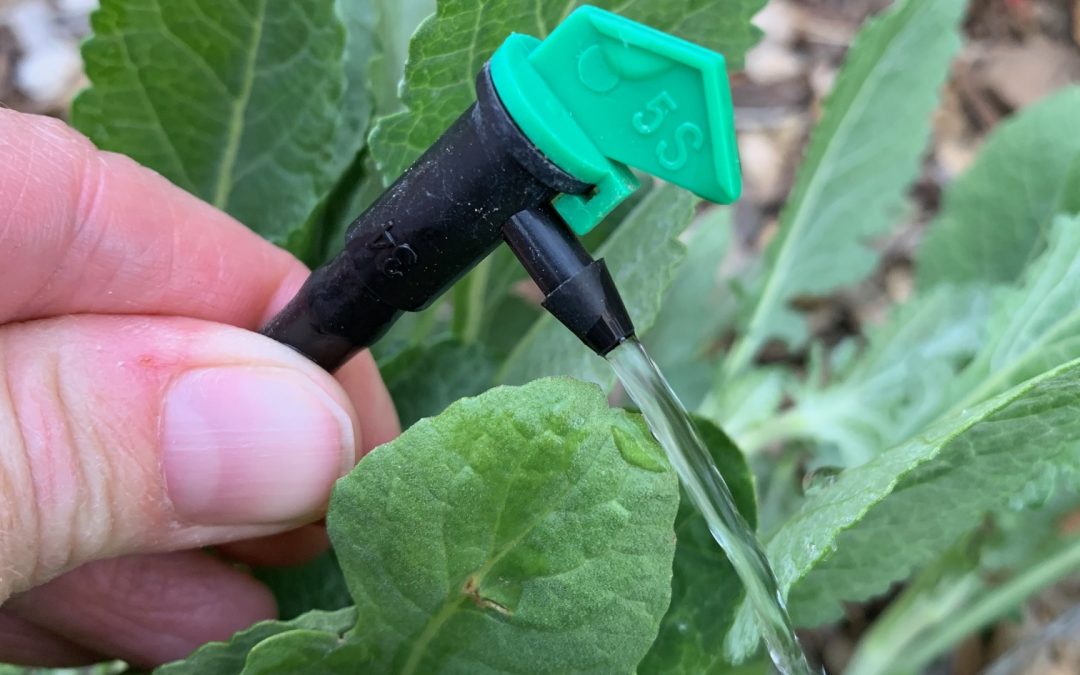The amount of water needed and where that water should be applied changes as woody plants (such as trees, shrubs and vines) get larger. Woody plant material has two types of roots, stabilizing roots and feeder roots. Both types of roots do just what their name implies. Stabilizing roots are thick and dense to keep the plant in place and support its weight. Feeder roots are super fine and grow more like a net to take in water and nutrients. Feeder roots expand out as the plant grows.
Some woody plants require more water as they mature, but more desert-friendly species may not require extra water or may even be able to survive without supplemental irrigation once established. Perennials normally do not need to have expanded watering the same way woody plants do as they mature.
Some examples of this:
| Plant Type | Plant | 1st summer | 2nd summer | 3rd summer |
| Tree | Desert Willow (Chilopsis linearis) | 60 gallon per month | 120 gallons per month | 400 gallons per month |
| Shrub | Butterfly Bush (Buddleia davidii) | 60 gallon per month | 70 gallon per month | 100 gallon per month |
| Desert-Friendly Shrub | Chamisa (Ericameria nauseosa) | 20-30 gallons per month | 20-30 gallons per month | Usually possible to remove from irrigation |
| Vine | Trumpet Vine (Campsis radicans) | 40 gallons per month | 60 gallons per month | 100 gallons per month |
| Woody Groundcover | Prostrate Sumac (Rhus trilobata) | 20-30 gallons per month | 40 gallons per month | 60 gallons per month |
For those plants that do have increased irrigation needs as they mature here are three easy ways to apply the right amount of water in the right place depending on the type of irrigation you are using.
- Drip Emitters – Move the drip emitters out to stay in line with the outer edge of the plants leaves where the feeder roots will be. Increase the number of emitters watering the plant too, placing them evenly around the outer perimeter of the plant.
- Netafim (in-line professional drip line) – this is typically installed in rings around the plant and additional rings can be added as the plant grows larger. Netafim can also be laid out in a grid pattern, particularly when being installed around an already established plant.
- Hand-watering – Build and maintain a watering well at the outer edge of the plant perimeter. As the plant grows, increase the size of the well.


